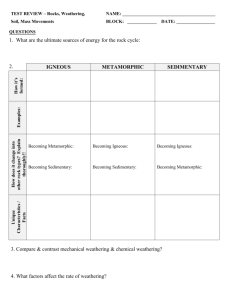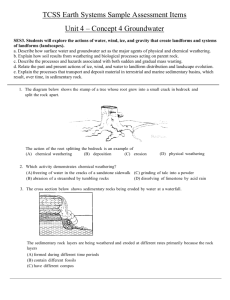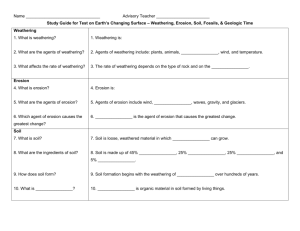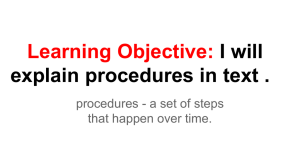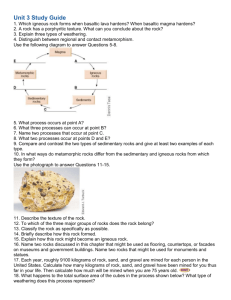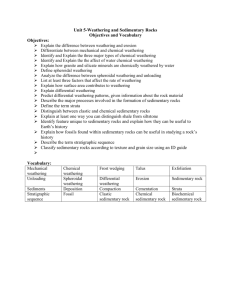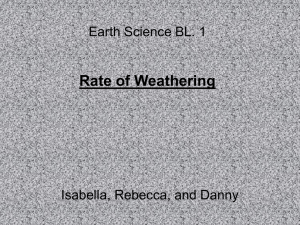Study Guide for Science Test
advertisement
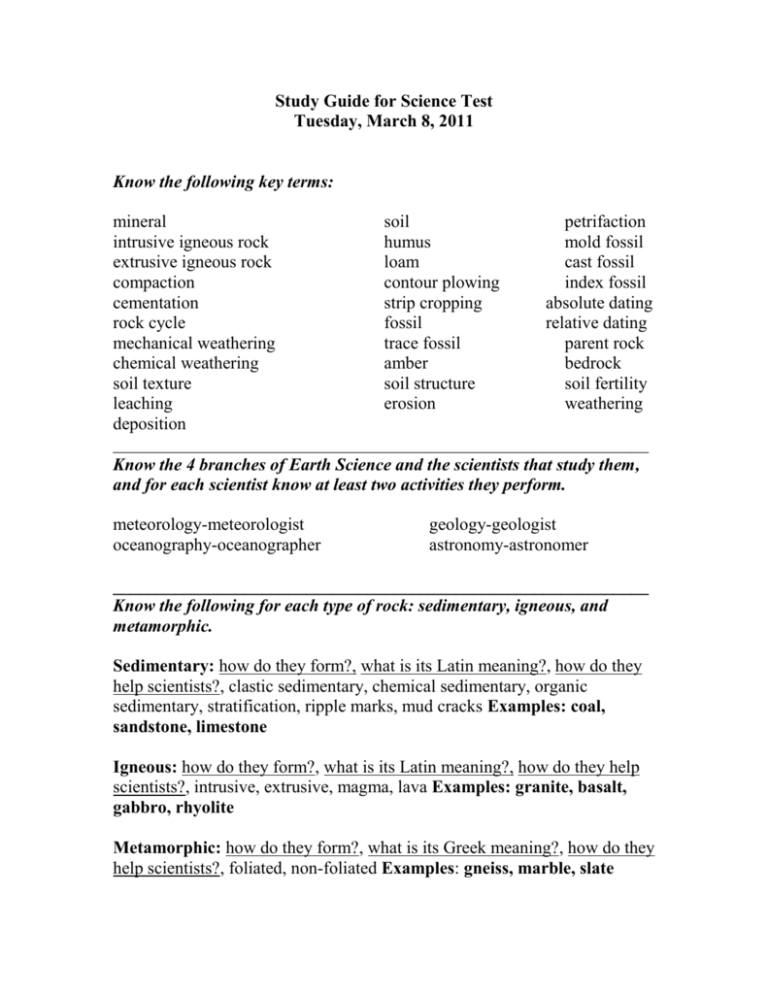
Study Guide for Science Test Tuesday, March 8, 2011 Know the following key terms: mineral soil petrifaction intrusive igneous rock humus mold fossil extrusive igneous rock loam cast fossil compaction contour plowing index fossil cementation strip cropping absolute dating rock cycle fossil relative dating mechanical weathering trace fossil parent rock chemical weathering amber bedrock soil texture soil structure soil fertility leaching erosion weathering deposition _____________________________________________________________ Know the 4 branches of Earth Science and the scientists that study them, and for each scientist know at least two activities they perform. meteorology-meteorologist oceanography-oceanographer geology-geologist astronomy-astronomer _____________________________________________________________ Know the following for each type of rock: sedimentary, igneous, and metamorphic. Sedimentary: how do they form?, what is its Latin meaning?, how do they help scientists?, clastic sedimentary, chemical sedimentary, organic sedimentary, stratification, ripple marks, mud cracks Examples: coal, sandstone, limestone Igneous: how do they form?, what is its Latin meaning?, how do they help scientists?, intrusive, extrusive, magma, lava Examples: granite, basalt, gabbro, rhyolite Metamorphic: how do they form?, what is its Greek meaning?, how do they help scientists?, foliated, non-foliated Examples: gneiss, marble, slate Know the 4 eras in Geologic Time: Precambrian Age of Earth Forming 4.5 billion years ago Paleozoic Age of Ancient Plants and Animals 570 million – 270 million years ago Mesozoic Age of Dinosaurs 270 million – 65 million years ago Cenozoic Age of Mammals 65 millions years ago Which era lasted the longest? Which era is still in existence? Which era is the trilobite an index fossil for? _____________________________________________________________ Know the 6 types of fossils (petrified, trace, carbon film, mold and casts, preserved and index) and how each one is formed. Know the correct order of the 6 soil horizons and their descriptions. Know the Rock Cycle diagram ____________________________________________________________ Essays: You will choose to do either 1a or 1b and you must do 2a. 1a) Explain the four steps to how a fossil is formed. 1b) What are three things that scientists can learn from fossils? 2a) What is the difference between mechanical weathering and chemical weathering? Name 5 ways mechanical weathering occurs and 3 ways chemical weathering occurs. Give an example to represent each type of weathering.
